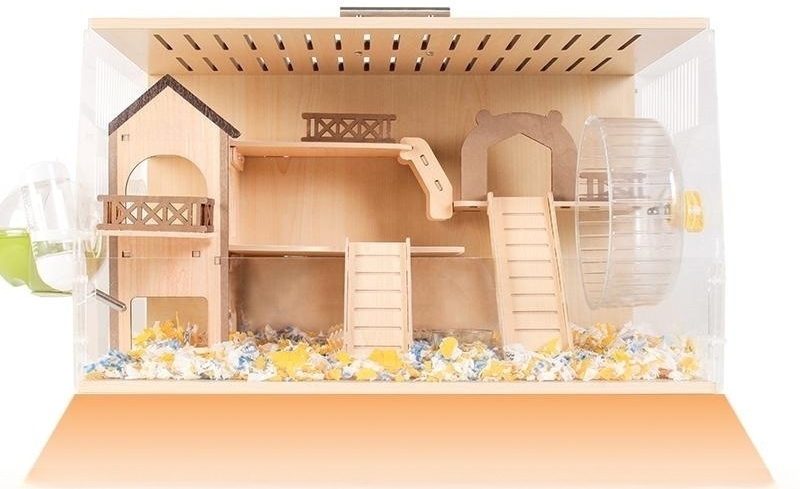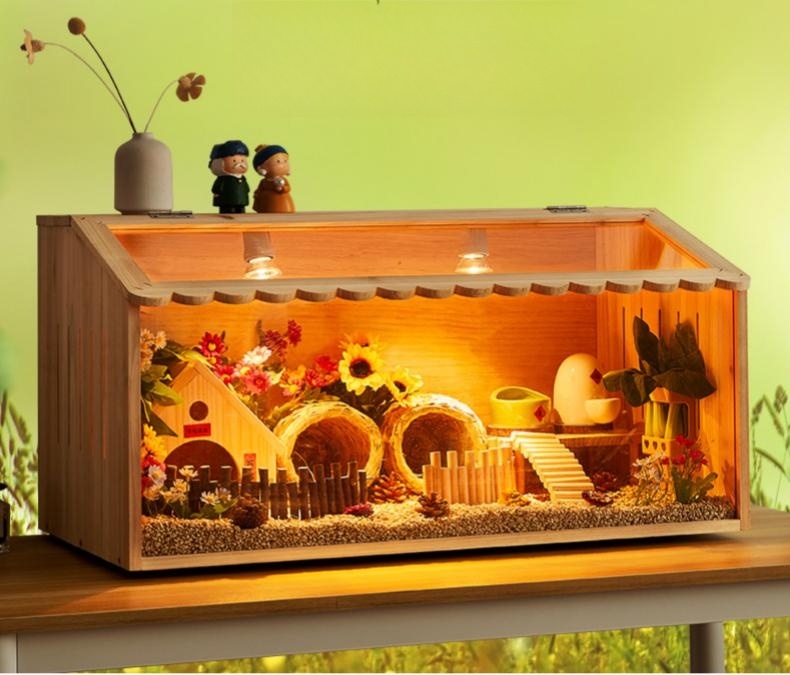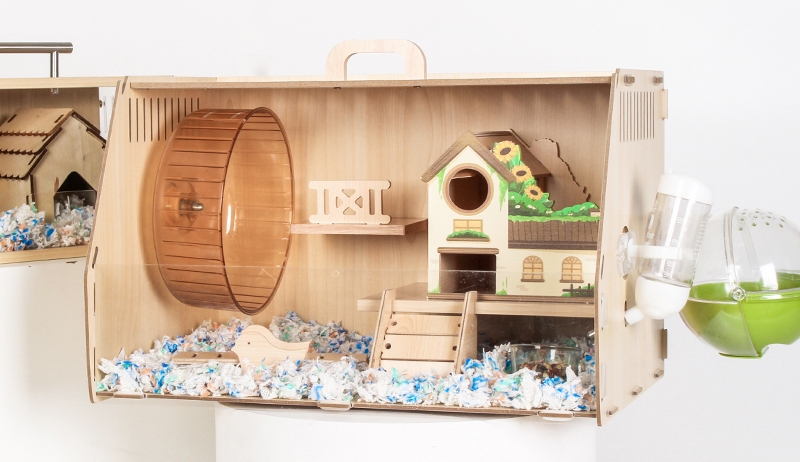
Can You Travel with a Hamster? A Comprehensive Guide
Traveling with a pet hamster isn’t as straightforward as it might seem. It requires careful consideration of your pet’s safety, comfort, and the logistics involved.

A clean cage is essential for keeping your pet hamster healthy and happy. But getting into a thorough cleaning routine can be tricky for new hamster owners.
From understanding how often to clean to learning the best methods, proper habitat hygiene takes some practice.
In this guide, we’ll provide lots of useful tips and tricks to make cage cleaning easier and more effective. You’ll learn how frequently different parts of their home need cleaning, what supplies work best, and step-by-step cleaning instructions. We’ll also cover common cleaning mistakes to avoid.
Follow along and you’ll become an expert hamster cage cleaner in no time! Let’s get started.

Here is a summary of how often each component of your hamster’s home needs cleaning:
Cleaning more frequently in warmer weather when bacteria and mold thrive. Spot clean daily and change bedding twice a week.
Aim to spot-clean the cage daily. This means:
Quick daily spot cleaning prevents odors and dirty conditions in between deeper cleanings. Be sure to give areas you scoop a quick wipe with a paper towel or unscented pet wipe to fully remove all waste.
In addition to daily spot cleaning, your hamster’s bedding should be completely changed out weekly. Here are the steps:
Regular full bedding changes keep your hamster on a clean slate and prevent harmful ammonia odors that are unhealthy for their respiratory system.
In addition to weekly bedding refreshes, the entire enclosure also needs a thorough deep cleaning once per month. Here are the steps for a monthly deep clean:
Deep cleaning of the cage fully removes all traces of waste, grease, and germs for a hygienic habitat. Be sure to use a gentle, non-toxic disinfectant suitable for pets.
In addition to the main cage, regularly wash all of your hamster’s food bowls, water bottles, hides, toys, exercise wheels, and other accessories. Follow this schedule:
Replace plastic accessories that become cracked or porous over time. Make sure to rinse all accessories extremely well after cleaning. Soap residue can make your hamster sick.

When seasons change, it’s a good idea to do an extra thorough cleaning. In spring, remove any old nesting materials and thoroughly disinfect their habitat before the higher temperatures of summer arrive and bacteria multiply more quickly.
Before winter, wash all accessories and bedding to remove any mites or pests trying to escape the cold. Provide extra cozy fluffy bedding in colder months. Do a deep clean whenever transitioning between very different seasons.
Having the right cleaning supplies makes cage cleaning faster and more effective. Stock up on:
Avoid harsh chemicals like bleach or strong-scented cleaners. Wear gloves when using any disinfectant. Store supplies together in a caddy for easy transport when cleaning day arrives.

Here is a recap of the step-by-step cleaning process from start to finish:
Return the hamster back to its nice clean home!
Follow this simple step-by-step process for cleanliness without stressing your hamster.
It’s easy for beginners to make cleaning mistakes. Here are some common errors to avoid:
Go slowly, use gentle cleaners, rinse fully, and dry completely. Clean hands properly before and after. Follow these tips and you’ll avoid common mistakes beginners make.
Why is cage cleaning so crucial for your hamster’s health? Here are some key benefits:
Regular cleaning creates a healthier habitat and prevents many illnesses. Keeping their home clean keeps your hamster happy and germ-free!
In conclusion, keeping your hamster’s cage clean through regular daily, weekly, and monthly cleaning routines is crucial to protecting their health and well-being.
While it may seem daunting at first, you’ll quickly get the hang of spot-cleaning daily messes, changing bedding weekly, and doing thorough disinfecting monthly. Having the proper pet-safe cleaning supplies makes the process easier.
Remember to wash all accessories and bowls thoroughly after cleaning to avoid leaving soap residue behind. Always completely dry the habitat before returning your hamster to prevent mold or chill.
Take care not to suddenly change too much in their environment at once to avoid undue stress. An important final step is washing your hands before and after handling your hamster or cleaning their home to prevent transmitting illness.
By sticking to a regular cleaning schedule, using gentle, pet-friendly disinfectants, thoroughly drying, and washing hands properly, you can keep your hamster happy in a clean, healthy home. They rely on you to keep their habitat fresh and hygienic.
So grab your cleaning gear, make some music to scrub too, and get cleaning to benefit your hamster’s health!


Traveling with a pet hamster isn’t as straightforward as it might seem. It requires careful consideration of your pet’s safety, comfort, and the logistics involved.

Finding the best hamster cage for Syrian hamster is crucial, as these curious, low-maintenance, and independent pets thrive in the right environment. The primary concern

When I began, the task of selecting essentials for a natural hamster habitat was daunting. To ease this process, I’ve assembled an exclusive set of

Have you ever wondered, “Are hamsters happier in bigger cages?” Generally YES. It’s a question that might seem straightforward, but there’s more to it than

Traveling with a pet hamster isn’t as straightforward as it might seem. It requires careful consideration of your pet’s safety, comfort, and the logistics involved.

Finding the best hamster cage for Syrian hamster is crucial, as these curious, low-maintenance, and independent pets thrive in the right environment. The primary concern

When I began, the task of selecting essentials for a natural hamster habitat was daunting. To ease this process, I’ve assembled an exclusive set of

Have you ever wondered, “Are hamsters happier in bigger cages?” Generally YES. It’s a question that might seem straightforward, but there’s more to it than
Copyright © 2025 woodhamstercage. All Rights Reserved.